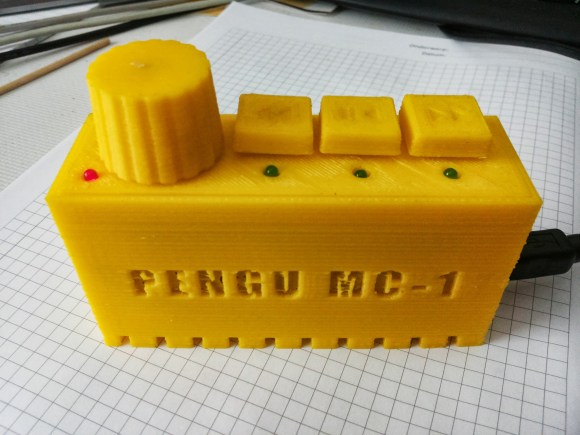17
There was a time when building realistic simulations of vehicles was the stuff of NASA and big corporations. Today, many people have sophisticated virtual cockpits or race cars that they use with high-resolution screens or even virtual reality gear. If you think about it, a virtual car isn’t that hard to pull off. All you really need is a steering wheel, a few pedals, and a gear shifter. Sure, you can build fans to simulate the wind and put haptics in your seat, but really the input devices alone get you most of the way there. [Oli] decided he wanted a quick and easy USB gear shifter so he took a trip to the hardware store, picked up an arcade joystick, and tied it all together with an Arduino Leonardo. The finished product that you can see in the video below cost about $30 and took less than six hours to build.
The Leonardo, of course, has the ability to act like a USB human interface device (HID) so it can emulate a mouse or a keyboard or a joystick. That comes in handy for this project, as you would expect. The computer simply has to read the four joystick buttons and then decide which gear matches which buttons. For example up and to the left is first gear, while 4th gear is only the down button depressed. A custom-cut wooden shifter plate gives you the typical H pattern you expect from a stick shift.
Of course, the joystick doesn’t have a long handle like a true stick shift, so [Oli] added some extensions. In addition, a real shifter doesn’t require you to hold it in position as a joystick would. To rectify this, the shifter plate has magnets that grab the stick and hold it. They aren’t strong enough that you can’t move the stick, but they are strong enough to keep it from moving on its own.
We noticed that the design doesn’t allow for a clutch, so it isn’t quite the same as driving a real stick. However, [Oli] mentions several upgrades he has in mind and a clutch is one of them. Some haptics would be a cool addition so could feel the gears grind if you didn’t do the shift correctly.
The last shifter we saw like this was 3D printed. It is getting harder to find a car in the US with a manual transmission, but [Kristina Panos] is definitely a fan.



